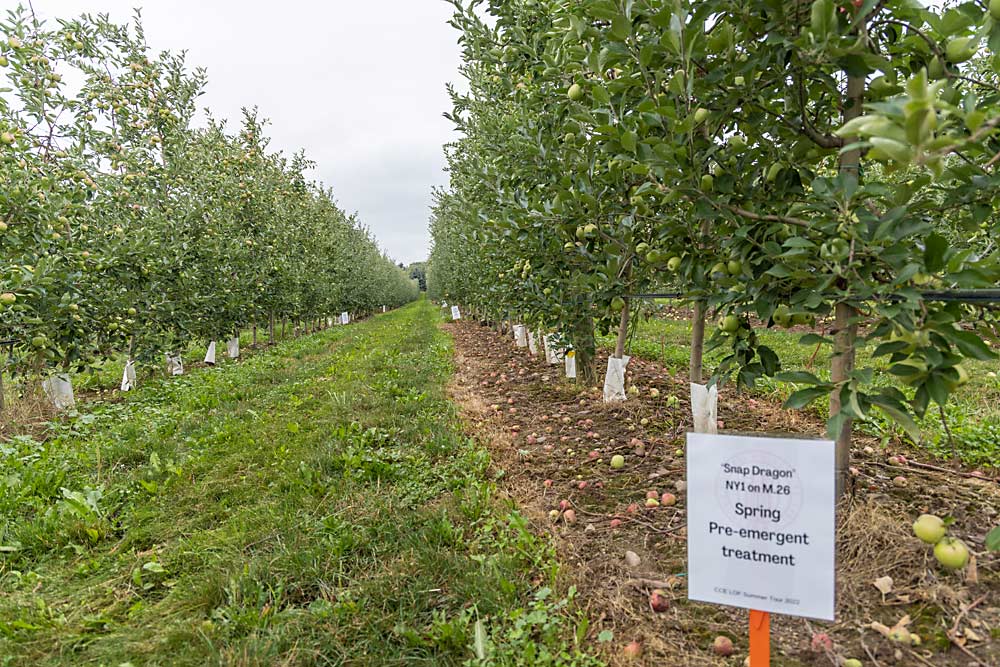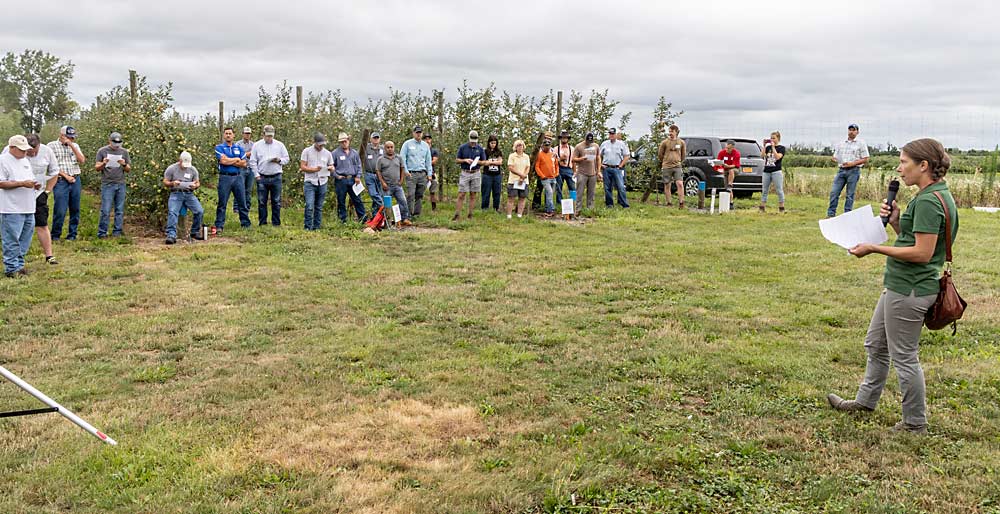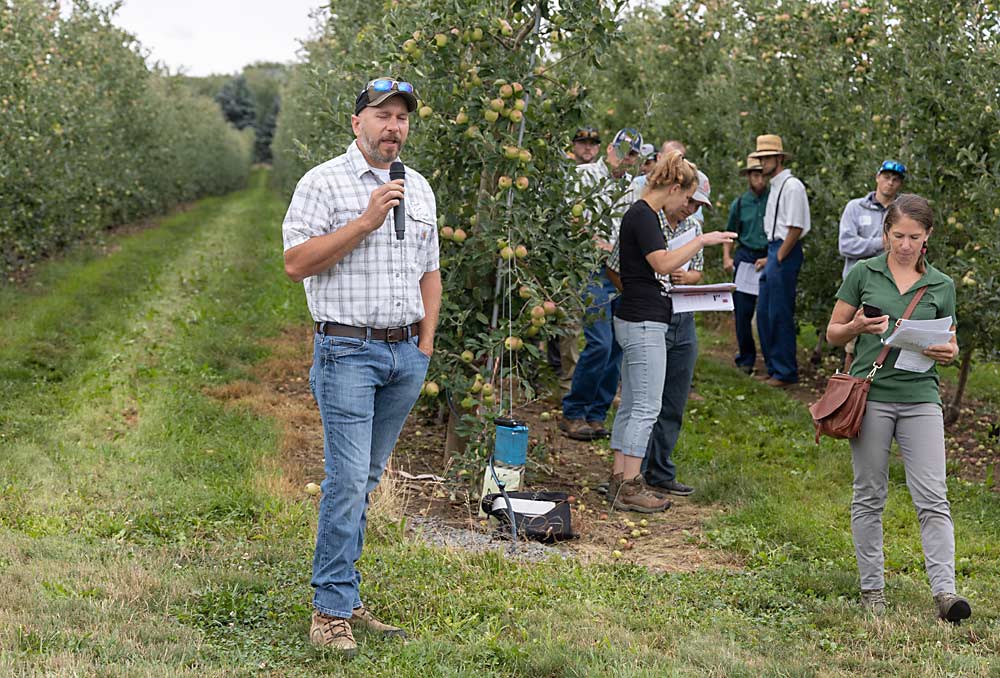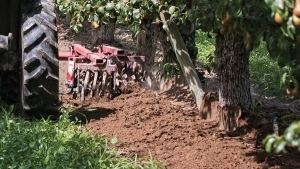
Like a lot of New York apple growers, Brett Kast used to start his herbicide program with preemergent applications in spring. He recently shifted his timing, however, and now makes initial applications in fall, right after harvest is over. The window between harvest and oncoming winter weather poses its own challenges, but fall applications save him time the following spring and control weeds more effectively, he said.
When Kast made the switch, he was following new recommendations from Cornell University researchers who, in the past several years, demonstrated the benefits of fall preemergent applications. It helped that some of their trials were conducted at Kast’s orchard in Albion, in the Western New York growing region, and that he could see the results firsthand.
The most recent trials were conducted by Cornell scientists Mike Basedow and Janet van Zoeren, who built off previous Cornell research that found applying preemergent herbicides just after harvest can be an effective way to manage weeds.
New York’s herbicide programs have never been uniform. Growers traditionally made their first preemergent applications in spring, but that’s a busy time of year, when growers have fungicides, insecticides and other tasks on their minds. Spring weather is generally less consistent than fall weather, too, which narrows the time frames in which growers can perform certain tasks. Fall herbicide applications remove a task from the spring to-do list, Basedow said.
To determine if growers should make the time-saving switch, Basedow conducted trials comparing the efficacy of spring versus fall herbicide applications. He and van Zoeren wanted trials in both Eastern New York, where orchards are generally smaller and rely more on direct sales, and Western New York, where orchards are generally larger and rely more on retail and processing markets, van Zoeren said.
The researchers also wanted to learn if the herbicide applications (including the postemergent herbicides incorporated into the program) would affect tree health and, if so, whether or not tree guards would protect the trees from spray damage.
The trials were conducted from 2020 through 2022. The New York State Apple Research and Development Program provided funding for the project.

Van Zoeren managed the herbicide trial at Kast’s Albion orchard: two rows of NY 1 (marketed as SnapDragon) on Malling 26, planted in 2017. Basedow managed the trial in a Peru orchard in Eastern New York: two rows of NY 1 on Geneva 935, planted in 2018. There were 12 trees in each treatment plot, and half the trees were fitted with a 10-inch Tyvek trunk guard. Herbicide applications were made by boom sprayer or backpack sprayer.
They’re still analyzing the data, but in both locations it was clear that fall applications achieved the best weed control. And so far, they’ve seen no difference in fruit size or yield, van Zoeren said.
The study focused on Alion (indaziflam) and Chateau (flumioxazin) mixed with Prowl (pendimethalin). Both preemergent treatments provided excellent weed control, but fall-applied Alion surpassed the spring-applied program through much of the growing season and seems to be the best fit for a fall program. Based on these results, the Cornell researchers now recommend Alion applications in fall rather than spring, as long as field conditions permit, van Zoeren said.
For best results, Alion should be applied to bare ground when rain is not expected for a solid two days afterward and should then receive moisture (rainfall or irrigation) to activate, van Zoeren said.
Tree damage?
In the Cornell trials, the Tyvek trunk guards almost entirely eliminated deposition of postemergent herbicide applications on the trunks. But neither the guarded nor unguarded trees had any detectible damage from herbicides. Basedow said the trees were only exposed to about three years’ worth of herbicide applications, and longer exposure might lead to more noticeable effects on tree health.
The Tyvek trunk guards cost about $272 per acre (in a planting of about 1,200 trees per acre), plus the time spent to cut the material to size and staple it in place. Tyvek guards are expected to last three to five years, according to the researchers.

In the Albion trials, van Zoeren noticed a lot of woolly apple aphids under the trunk guards, but it’s possible the guards were a little tight, she said.
The Cornell scientists have set up a new trial to test the long-term effects of herbicide spray on the health of apple trees and identify the best means of protection. Growers in Peru and Albion will apply their normal herbicide programs in test blocks consisting of untreated trees, trees with Tyvek trunk guards and trees painted with latex paint. The researchers will spend the next decade or more observing the effects on tree growth, Basedow said.
—by Matt Milkovich







Leave A Comment